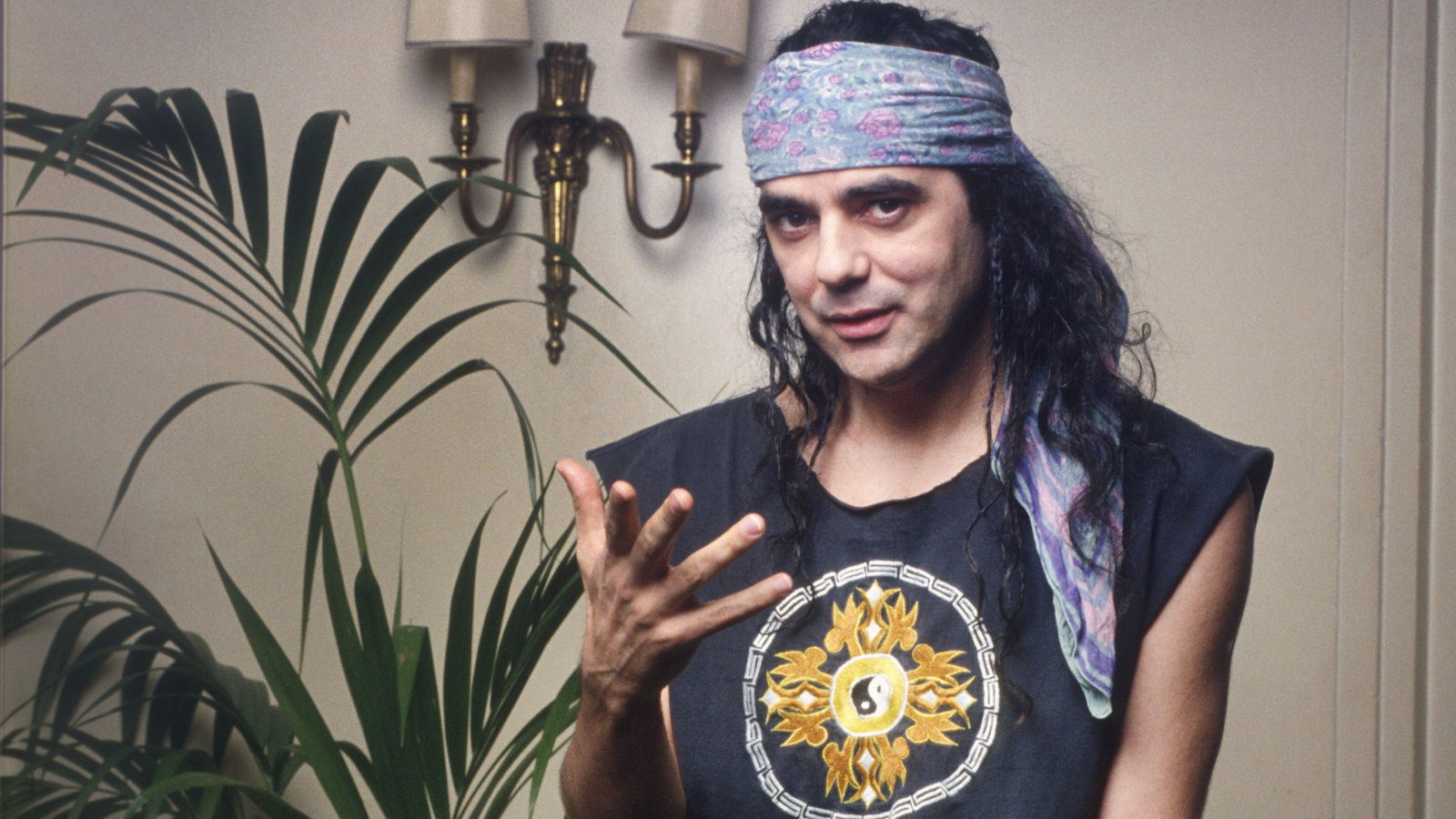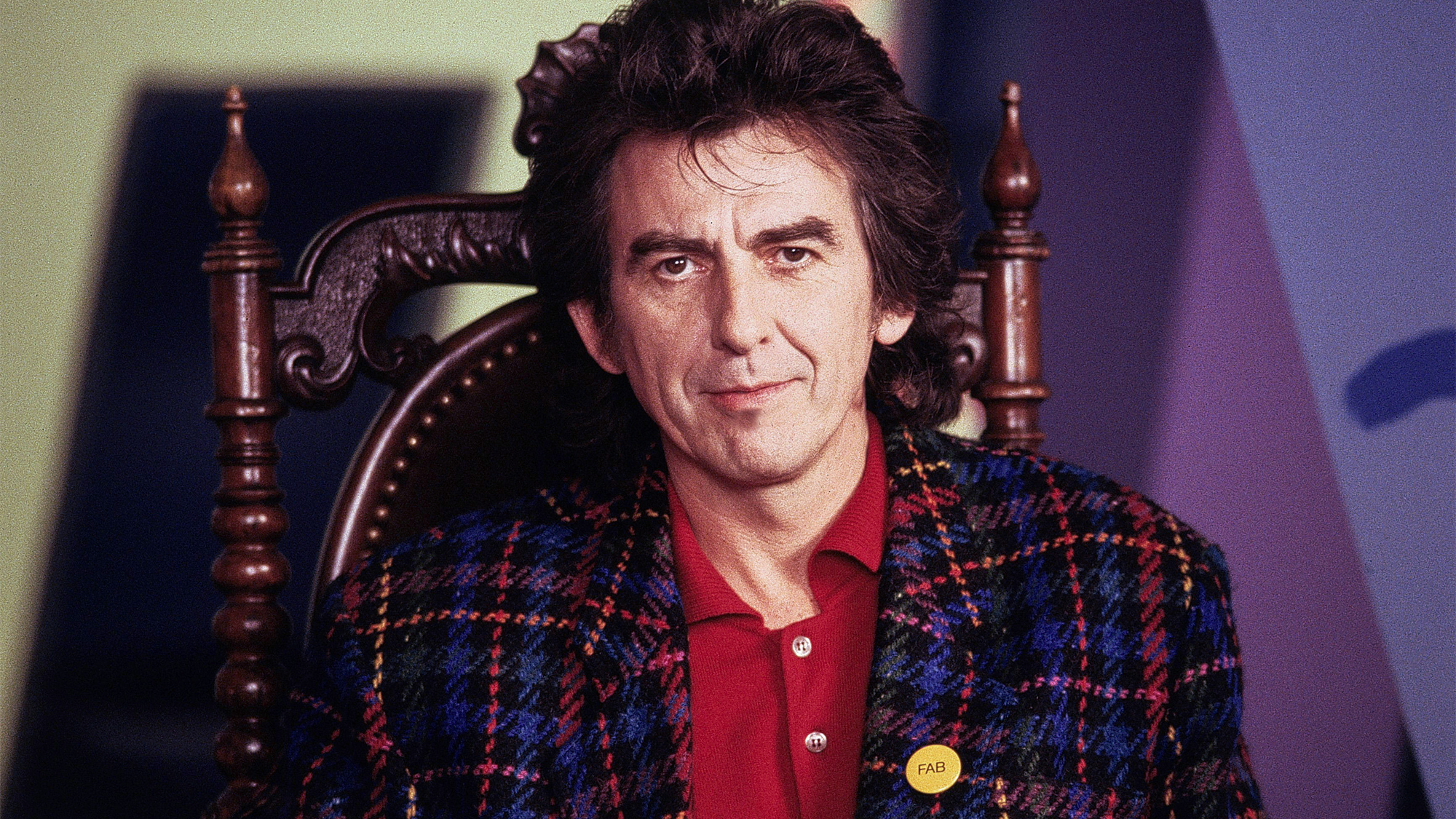
Canadian guitarist and singer-songwriter Daniel Lanois has produced albums for such legends as Bob Dylan, Neil Young, Peter Gabriel, Robbie Robertson, Emmylou Harris and Willie Nelson.
Alongside Brian Eno he has also co-produced a number of U2 albums, including 1987’s The Joshua Tree and 1991’s Achtung Baby.
Friendly and forthcoming, he is the polar opposite of the stereotypical paranoid producer who jealously guards his studio secrets.
His unspoken attitude seems to be, why not share a good idea if it will help someone make better music?
The following interview extracts originally appeared in the June 1993 issue of Guitar Player…

What's your favorite way to record guitars?
“It's very important to record musicians as physically close together as possible. You and I are sitting about two feet apart; if we were playing acoustic guitars, we wouldn't have to wave or ask someone to turn up the cans.
All the latest guitar news, interviews, lessons, reviews, deals and more, direct to your inbox!
“That's why I like to use two amplifiers with each guitar. Once sits right next to you; that's your personal monitor. Then I put another amp of the same type down the hall, splitting the signal with a Morley splitter box.
I usually place a single dynamic mic fairly close to the speaker, but off-center
Daniel Lanois
“I track both amps, but I usually end up using the isolated sound, which still sounds close and personal even if the amps are three rooms apart. I usually place a single dynamic mic fairly close to the speaker, but off-center.”
How about acoustic guitars?
“My main acoustic is this little Guild student model from the late '60s. It's not real loud, but it's fantastic for recording. I keep it in an open tuning; F - F - C - F - A - C low to high, or sometimes F - F - C - F - F - C.
I like to take advantage of the personality of the guitar, pickup, and amp
Daniel Lanois
“I don't use a pick. I sometimes mike the guitar, but more often I use these early-'80s Lawrence pickups that The Edge turned me on to.
“Pickups can actually be more musical than the pure instrument. You get additional harmonics that you don't hear acoustically.
“If you're a real purist, this idea makes no sense. But I like to take advantage of the personality of the guitar, pickup, and amp.”
Is board EQ part of the equation?
“I don't rely on board EQ to get a good sound, but I will use it to create a stranger sound.
“I'll give away one of my secret techniques: Say you've just spent a few hours mixing a song with a lot of effects, crazy EQ, and so on. Put that song away and play every other song on the record through that same mix. I guarantee that at least two or three songs will have something fantastic.
“That technique has directed me towards a lot of strange approaches that I never would have come up with normally.”
There isn't room for everything to be big
Daniel Lanois
Any other mixing advice?
“There isn't room for everything to be big. Take Jimi Hendrix records as an example: The guitars are big and powerful, but the drums are like jazz kit recordings. They sound beautiful, but the snares aren't as big as a house and the kick drums don't occupy the whole spectrum.
“Something might serve the music better if it has its own little corner. That doesn't mean it's less important than the foreground, but not everything can be the icing on the cake.”
To what extent are you the architect of the guitar sounds on records you produce?
“Most guitar players have a big rig that they've worked on and put sounds into, and I usually don't mess with that. But quite often I suggest alternative rigs, usually simpler ones.
“The big rig is generally in the band room, and there's a more informal one in the console area where you're working out parts.
“For example, Bono has this old green Gretsch that we often do D.I. just to work out chords. That may sound great, so the guitar works its way into Edge's hands, and we record it that way.
Nine times out of ten, if you just plug in to work out a part, you actually end up with a pretty good sound
Daniel Lanois
“Nine times out of ten, if you just plug in to work out a part, you actually end up with a pretty good sound. In fact, a lot of Edge's sounds on Achtung Baby were recorded on this little solid state practice amp we had in the control room instead of the AC30.”
Is it possible to make a great record with an inexpensive 4-track machine and a couple of Shure mikes?
“No problem! Cheap recordings can be musical. I know people who recorded on PortaStudios and were never able to replicate the warm, overdriven sounds of those machines in big studios.
“Some of that quality comes from EQ-ing tracks when you bounce them. The version of "The Ballad of Hollis Brown" on the Neville Brothers Yellow Moon was recorded on an Akai 12-track in my apartment.
“We mixed onto a good Sony cassette machine, and I never got a better mix, so we ended up putting the cassette mix on the final album."
How about mics?
“You don't necessarily need expensive mikes. I've always recorded Bono's vocals through a Shure SM58 or 58 Beta.
“Some of the best guitar recordings are done with inexpensive dynamic mikes. I almost always use a Beyer 88 or Shure 57 or 58, though if you want a really pure vocal or acoustic recording, you might have to go with a great tube mike.
Resourcefulness never goes out of fashion
Daniel Lanois
“Sometimes technical limitations just mean you have to be resourceful, and resourcefulness never goes out of fashion.
“We were going to record Achtung Baby in a house outside Dublin using Edge's big Neve console, but they couldn't get it ready in time, so we recorded most of it through a cheap Soundcraft console – basically a P.A. board.
“We did use some external Neve preamps, but the board itself sounded great.
“Remember, energy and ideas override technology. If you have the technology, use it. But if you haven't got the cash, don't worry.”
Browse the Daniel Lanois catalog here.
Joe Gore is a guitarist and writer and a former editor for Guitar Player magazine. He has played on albums by Tom Waits, PJ Harvey, Les Claypool, Mark Eitzel, Tracey Chapman, Courtney Love, Eels and more. His book, The Subversive Guitarist is out now and has been acclaimed by Vernon Reid, Gretchen Menn and Dweezil Zappa, among others. For more information, visit his website.



